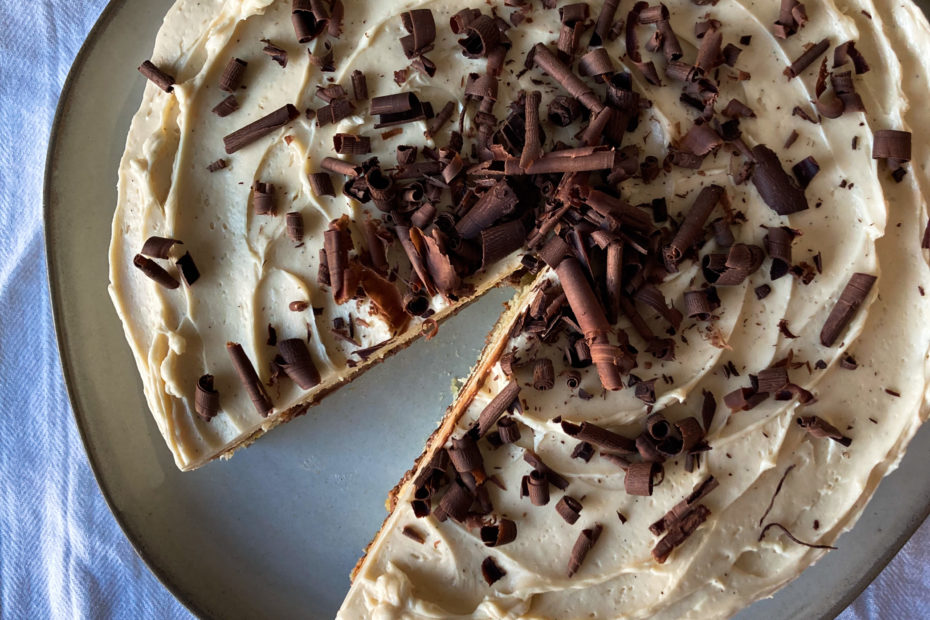I get in the mood for making cakes around February, and I tribute that to my mom’s birthday at the end of the month. I usually have fun thinking of ideas for the cake, and try to practice making it. I remember one year, when I was in Tennessee, I decided to make a browned-butter cake with whiskey French buttercream, and a hazelnut-chocolate filling. I was so pleased with the result, and I distinctly remember taking the cake to work and having not a crumb left on the plate by the end of the morning. Success!
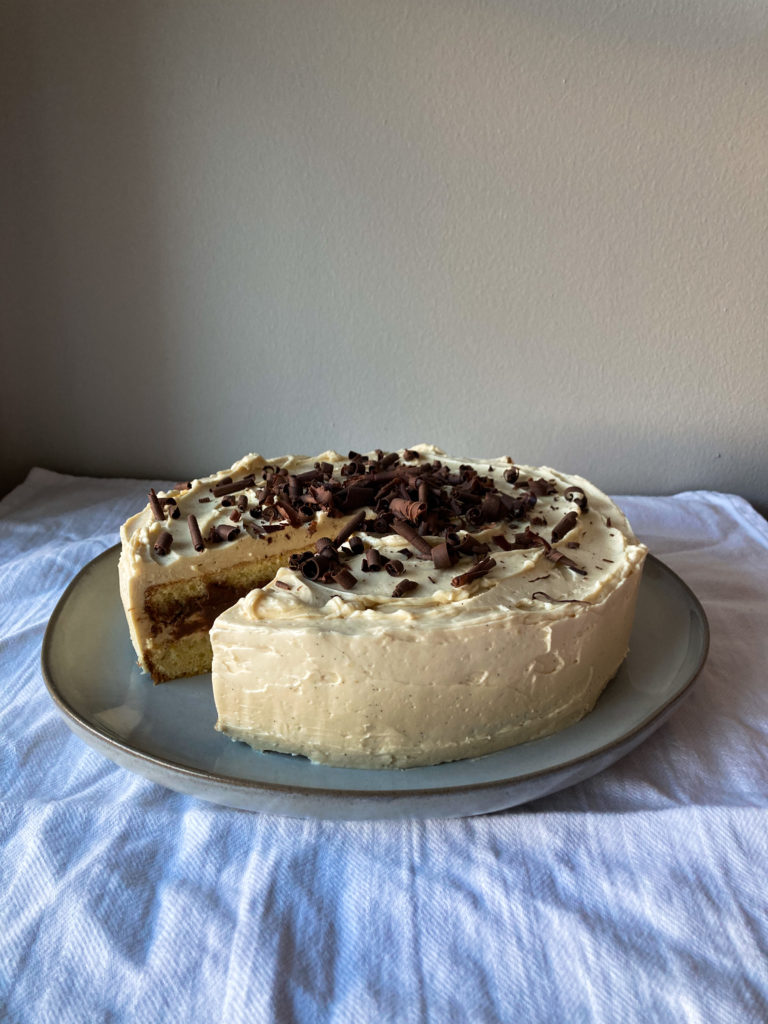
This cake, while it may not be the one I make for my mom due to time, is balanced and not too sweet. It is quite rich, but the bitterness from the chocolate and espresso balance it out. The vanilla bean in the frosting make it feel special, not to say anything about making swiss buttercream (which is really easier than you think). I am typically not a fan of frostings, but I can tolerate a properly made Swiss, French or Italian buttercream once in a while.
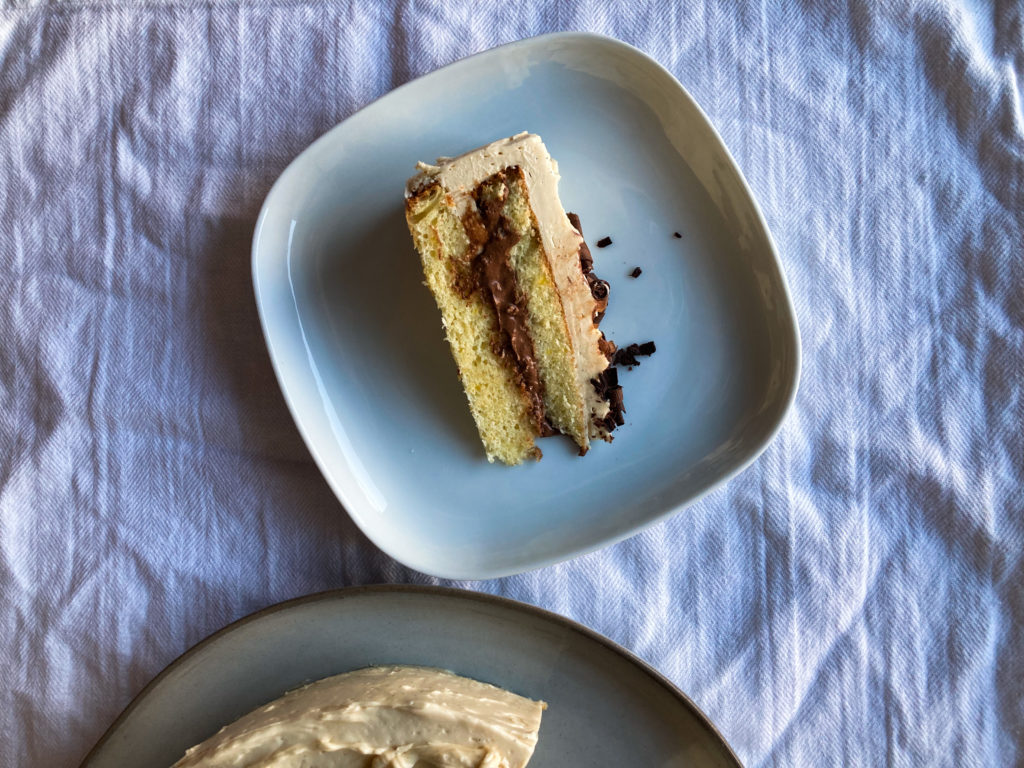
You can make the cake up to a week or two ahead, and freeze it (well wrapped, please!). Make the buttercream a few days ahead, and store in the fridge. The same with the ganache – just remember to whip the ganache RIGHT before using it, otherwise it gets too firm to spread.
The trick with Swiss buttercream, really any buttercream, is temperature. The sheer mass of butter in the buttercream drives the behavior of the frosting as it is mixed! Too cold (i.e. below about 72-74F), and it’s “curdled” in texture. Too hot, and it’s greasy and flat. In either case, you can either gently warm the buttercream in the bowl by placing it in hot tap water, just until the edges start to melt. Or, stick it in the fridge for a few minutes. Whip until fluffy and smooth. Success!
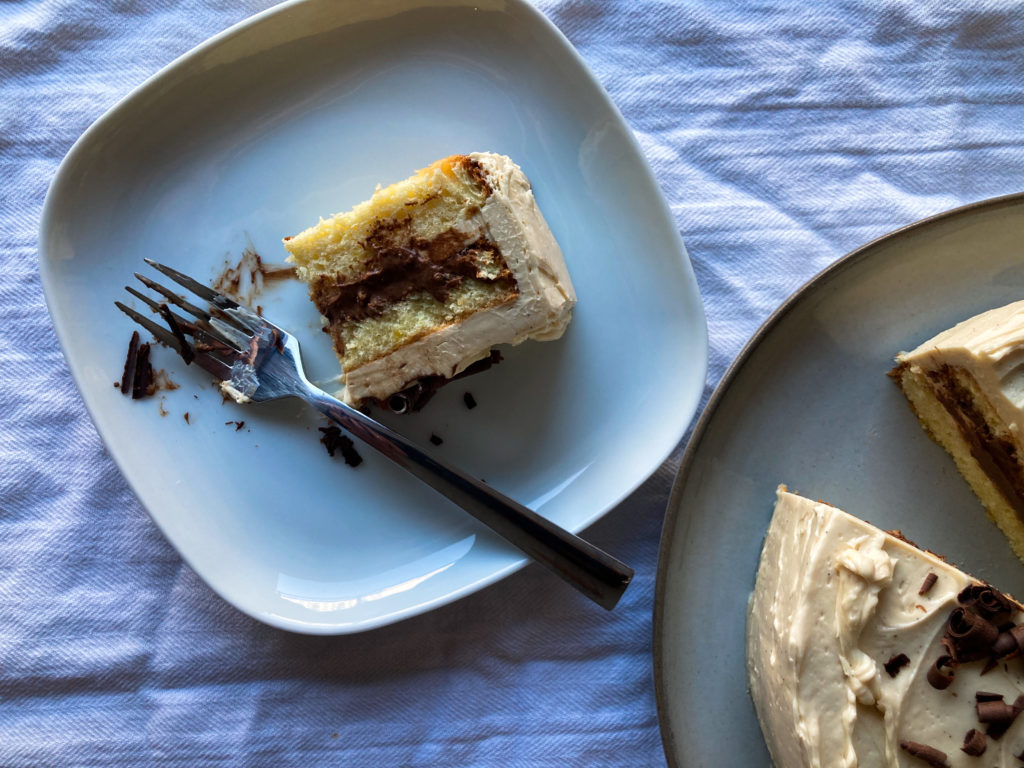
I like swiss buttercream the best because the egg whites are cooked with the sugar to 160F, which guarantees food safety. Second, unlike Italian buttercream, it requires no molten-hot sugar syrup. Unlike French buttercream, there are no yolks or whole eggs, eliminating some richness when you don’t need it. However, there is a time and place for all. But here, Swiss does the trick!
Be sure to allow the cake to come to room temperature before enjoying. There is a LOT of butter in the frosting, and the whipped ganache really tastes best at or near room temperature. Enjoy!
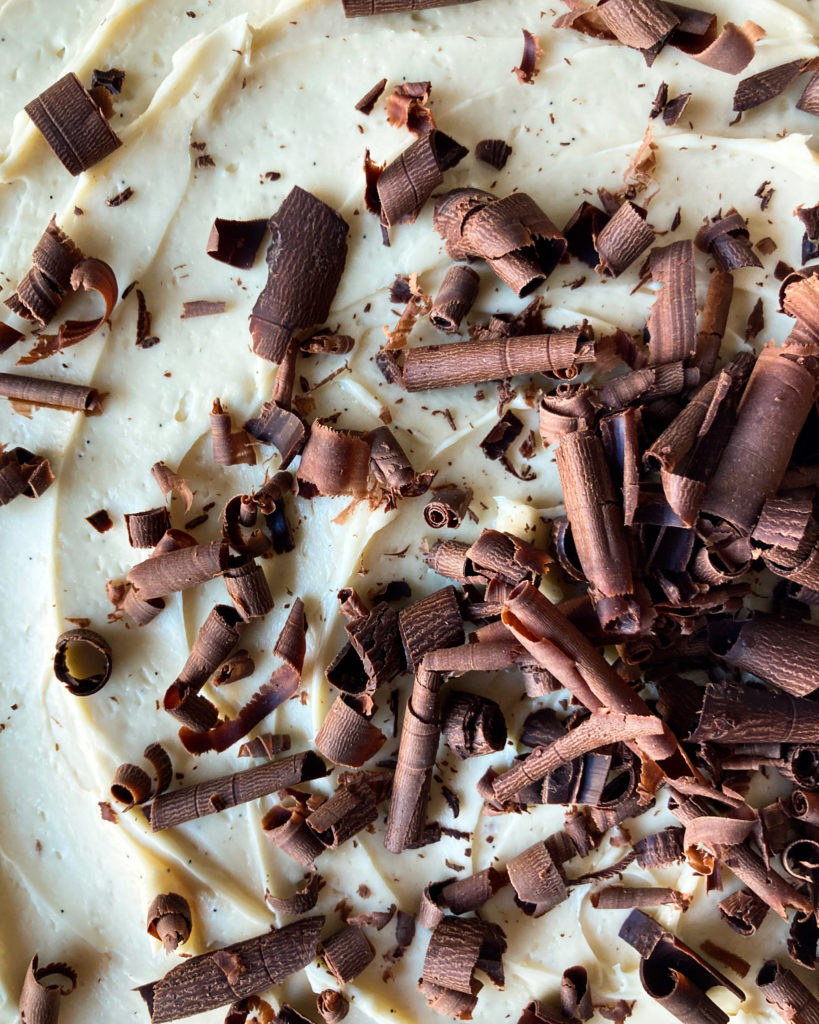
Whipped ganache recipe adapted from Alice Medrich, and buttercream adapted from Claire Saffitz.
Vanilla Genoise with Espresso Swiss Buttercream & Whipped Ganache
Serves 12-16
- 1 recipe almond genoise, omitting the orange zest & adding in 1 TB of vanilla extract
- Espresso Swiss Buttercream:
- 3 large egg whites (165g)
- 3/4 cup (150g) granulated sugar
- 1/2 tsp fine sea salt
- 1/4 tsp cream of tartar
- 3 sticks unsalted butter (229g), at room temperature, about 70F, cut into 1 TB sized pieces
- 2 tsp espresso or very strong coffee
- Seeds from 1/2 vanilla pod
- Whipped Ganache:
- 8 ounces dark chocolate, ideally 55% to 70% cocoa solids, finely chopped
- 2 cups heavy cream
- 1 cinnamon stick (optional)
- 2 TB coffee beans (optional)
- Cake Soaking Syrup:
- 3 TB honey
- 3 TB water
- For Garnish:
- 1 bar of dark chocolate (optional)
- Prepare the cake as directed here. Allow to cool completely. Once ready to assemble the cake, level the top if domed, and then slice the cake in two slabs. Set aside.
- Up to a few days in advance, prepare the buttercream: to the bowl of a stand mixer or one that will accommodate a hand mixer, add the egg whites, sugar, cream of tartar and salt. Fit a stand mixer with the whip attachment, and have the paddle nearby.
- Prepare a medium saucepan with water, enough just to touch the bottom of the bowl with the egg white mixture. Bring water to a simmer, then set the bowl on top. Whisk constantly until mixture reaches 160F.
- Immediately transfer bowl to the mixer, and whip until the meringue formed is room temperature. The bowl should not feel hot or warm. Allow to sit if the meringue is still too warm, otherwise the butter will melt, resulting in a less aerated and greasy buttercream.
- Once room temperature, start whipping on medium, and add the butter 1 piece at a time, gradually, until you’ve added 2 sticks worth.
- After you’ve added 2 sticks worth, stop the mixer, and scrape down the sides of the bowl. Switch to the paddle, and on medium add the remaining 1 stick of butter. The buttercream may look curdled, but keep mixing. The butter will warm, and the mixture will become smooth.
- Once smooth, add the cooled 2 tsp of espresso or strong coffee. Add the vanilla bean, if using. Mix until combined.
- Scrape down bowl again, ensuring everything is mixed.
- You can now refrigerated the buttercream, covering the bowl tightly, if needed.
- At least 8 hours, up to 4 days ahead, before assembling cake, prepare the ganache:
- In a small sauce pan, add the cream, cinnamon stick and coffee beans. Bring to a simmer, then off the heat. Place a lid on the pan, and allow the cream to infuse for 10-15 minutes. Meanwhile, add the chocolate to a bowl.
- After 10-15 minutes, bring the cream back to a simmer. Strain directly over the chopped chocolate. Cover the bowl, and let sit for 5 minutes. Stir to combine. Allow to come to room temperature, then cover and refrigerate for at least 8 hours, until thickened. The mixture will be runny, even after refrigerating.
- Assemble the cake: If you’ve refrigerated the buttercream, allow it to come to room temperature, and then re-whip. Placing the bowl in hot tap water can expedite this: place bowl into hot tap water, just until the buttercream edges melt, then whip. It may take a few minutes to get the frosting back to a smooth, fluffy mixture.
- Prepare the soaking syrup by combining the honey and the water in a small pan, and bringing to a simmer.
- Place the bottom layer of the cake, cut-side up, on a serving platter. Blot with the soaking syrup. Allow to sit for a moment, in which you will now whip the ganache.
- Using a whisk or mixer fitted with the whip attachment, whip the ganache until it starts to thicken, but not enough to where you see particles of coalesced fat forming. Immediately spread enough of the mixture onto the cake layer on the serving plate to have about 1″ of whipped ganache layer. You may have some extra whipped ganache – save it and enjoy by the spoonful!
- Apply soaking mixture to the top layer of cake, to the side that will touch the whipped ganache. Even out the layers so they are even, directly on top of each other. Press down firmly to adhere the top layer to the ganache.
- Apply a thin coat of buttercream (crumb coat), and refrigerate for 10-15 minutes to firm the buttercream.
- Spread the remaining buttercream on the cake, making swirly patterns as desired.
- Garnish with chocolate shavings, if desired, shaving a chocolate bar with a vegetable peeler.

